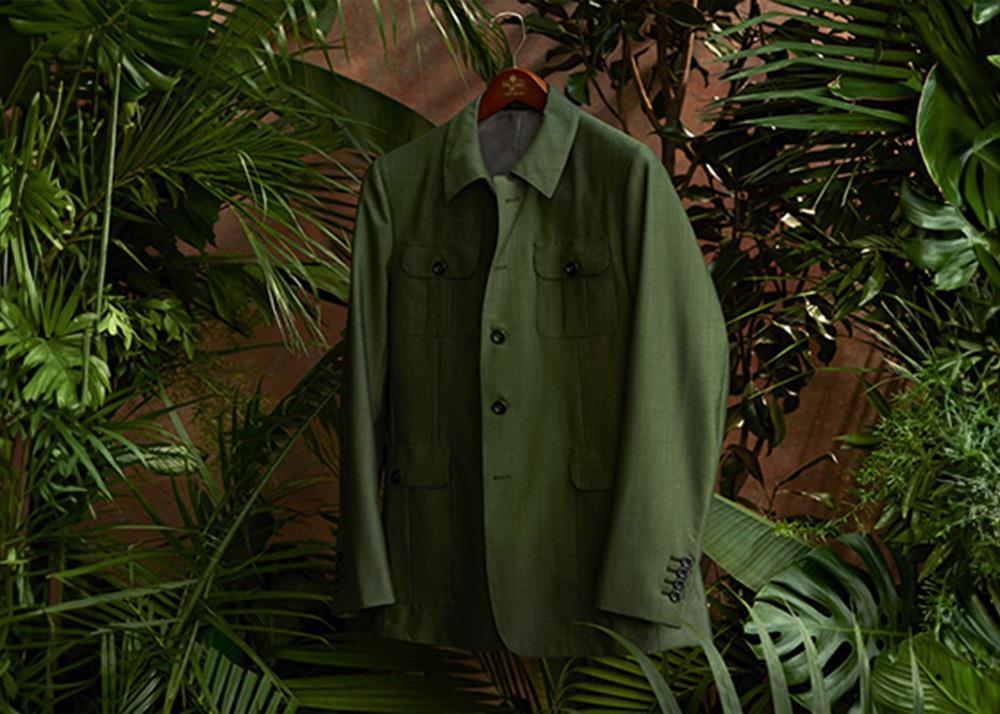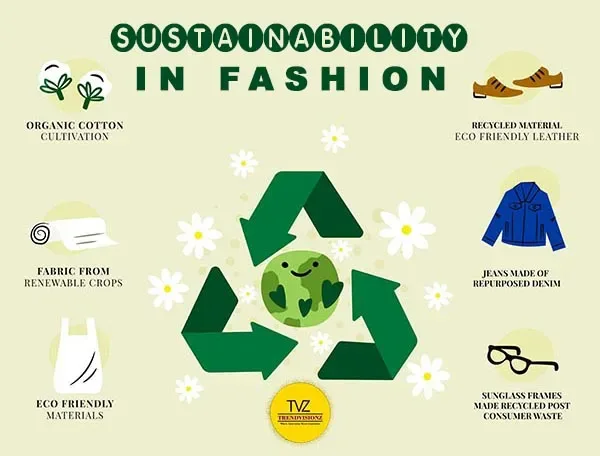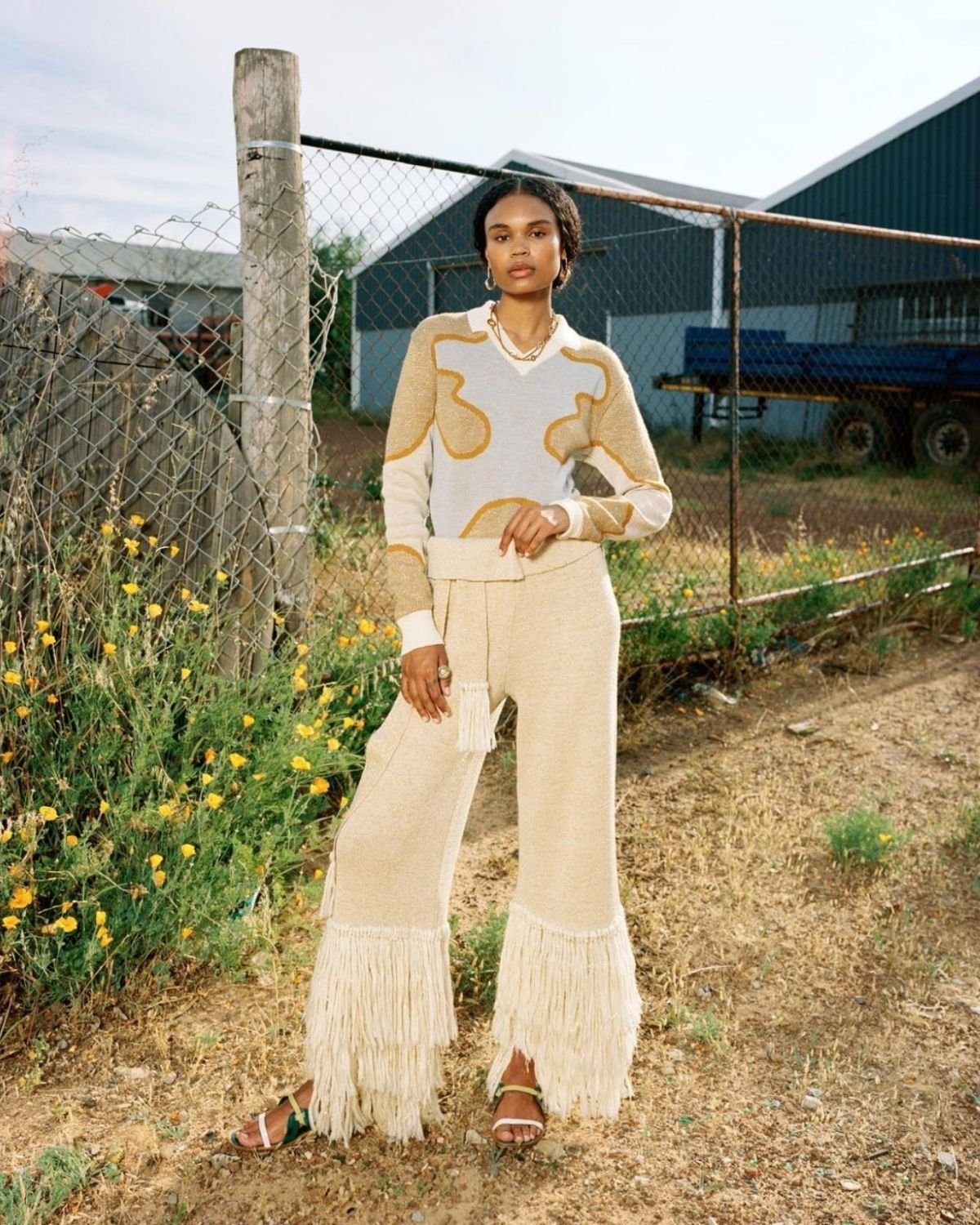Cape Town Sustainable Fashion: Redefining Style with Honest Choices
Wiki Article
Keep Ahead of the Curve by Discovering Innovative Style Patterns
In an industry as dynamic as style, staying ahead entails more than simply following present fads-- it requires an exploration of innovation. Smart textiles, as an example, are changing garments right into functional masterpieces, while 3D printing is revolutionizing layout processes with its customizable, waste-reducing abilities. As sustainability becomes a foundation, technologies like green materials and round style methods are reshaping environmental obligation - Cape Town Sustainable Fashion. In addition, the convergence of innovation and fashion heralds a new period of customer engagement. How, after that, can these arising fads redefine the future of style, and what implications do they hold for brand names seeking to prosper in this evolving landscape?
Welcoming Smart Textiles
In the last few years, the apparel industry has observed a transformative change with the assimilation of smart textiles, a cutting-edge technology that mixes innovation with textile. This advancement stands for not only a combination of appearances and performance however likewise a considerable jump towards sustainability and personalization in vogue. Smart textiles, also called e-textiles, embed innovative electronic devices such as sensors and conductive strings within the fabric, making it possible for garments to connect with the wearer or the atmosphere.These fabrics are designed to keep an eye on physiological specifications, such as heart rate or body temperature level, providing real-time health analytics. Beyond health and wellness applications, wise textiles are additionally being used for flexible clothing, which can change shade or pattern in reaction to environmental stimulations, thus offering a dynamic style experience.
Additionally, the advancement of energy-harvesting fabrics that generate power from movement or sunshine is leading the way for self-sufficient wearable innovation. This innovation is attracting environmentally mindful consumers and designers aiming to minimize the eco-friendly footprint of style. As research study and growth in this area development, wise textiles are anticipated to come to be increasingly common, improving the landscape of modern style with their multifunctional capabilities.
The Increase of 3D Printing
Changing the production landscape, 3D printing has actually become a game-changer in the garment industry. This cutting-edge innovation has enabled developers to push the boundaries of imagination, generating detailed and personalized garments that were formerly inconceivable. By leveraging electronic style and additive manufacturing, 3D printing facilitates the creation of complicated geometries and patterns, enabling developers to trying out brand-new textures and structures.A significant benefit of 3D printing in style is its capability to create on-demand, decreasing waste and lowering inventory needs. This effectiveness not only enhances manufacturing processes yet likewise enables quick prototyping, making it possible for designers to bring their visions to life in a much shorter timeframe. Moreover, 3D printing supports modification to a degree unrivaled by conventional methods, offering tailored fits and distinct styles tailored to private customer preferences.
The surge of 3D printing has actually also equalized style, making it easily accessible to emerging developers that can now make premium pieces without considerable economic investment in typical manufacturing facilities. As innovation remains to advancement, the fashion market is positioned to harness the full potential of 3D printing, discovering brand-new materials and methods that will certainly redefine exactly how style is conceived and created.
Sustainable Style Innovations
As the apparel industry faces journalism demand for environmental responsibility, sustainable fashion technologies have actually arised at the forefront of transformative modification. The expanding awareness of ecological influence has actually fueled a shift towards even more eco-conscious methods and products. Developers and brand names are currently focusing on sustainability, including approaches that reduce waste and lower carbon footprints.One considerable advancement is the increase of round style, which highlights recycling and upcycling to extend the lifecycle of garments. This method not just decreases waste yet also motivates customers to embrace a more mindful strategy to apparel consumption.
Another advancement depends on the adoption of Web Site ingenious dyeing techniques that use all-natural dyes or waterless procedures, consequently lowering the huge quantities of water and chemicals generally used in textile dyeing. Moreover, advancements in biotechnology have actually led to the creation of lab-grown leather and fabrics, using ecologically friendly and cruelty-free alternatives to standard materials. With these pioneering efforts, the apparel industry is making meaningful strides towards a much more lasting future.

Tech-Integrated Clothing
Tech-integrated garments represents an innovative fusion of style and innovation, improving how individuals communicate with their garments. This innovative domain name is marked by the inclusion of wise textiles and embedded digital parts, boosting both capability and visual appeal. From physical fitness trackers embedded in sportswear to heated jackets managed using smartphone apps, tech-integrated apparel supplies customers unmatched comfort and adaptability.Pioneering brands are driving this fad, concentrating on producing garments that react to environmental stimulations or customer commands. For example, some garments can transform shade or pattern in reaction to temperature shifts, while others incorporate biometric sensors to monitor health metrics like heart rate or tension degrees. The smooth assimilation of modern technology right into fabrics additionally expands to environmental sustainability, with initiatives to establish self-cleaning fabrics or garments that readjust to weather, thus minimizing the demand for numerous layers.
Furthermore, the introduction of wearable innovation is not simply restricted to clothing however encompasses accessories like watches and eyewear, further broadening the scope of tech-integrated style. As the industry continues to innovate, the possibility for customization and customization in click now garments grows, offering consumers special, tech-enhanced fashion experiences that satisfy their specific requirements and choices.
Future of Virtual Fashion
In recent times, the future of digital fashion has become a transformative pressure within the industry, leveraging innovations in electronic innovation to redefine how fashion is produced, experienced, and eaten. By integrating augmented truth (AR), virtual fact (VIRTUAL REALITY), and 3D design tools, designers can now craft interactive and immersive experiences that transcend standard style borders. Online fashion allows for the development of garments that exist only in digital environments, providing countless possibilities for development without the limitations of physical manufacturing.This electronic change not only presents opportunities for innovative expression yet additionally addresses sustainability concerns fundamental in standard style techniques. Cape Town Sustainable Fashion. By removing the need for physical resources, online fashion decreases waste and reduces carbon impacts. In addition, the surge of online style straightens with the raising consumer need for customized and special experiences, as digital garments can be personalized and customized to private preferences effortlessly

Conclusion
The style sector's future hinge on the assimilation of cutting-edge innovations and sustainable techniques - Cape Town Sustainable Fashion. Smart textiles and tech-integrated apparel are boosting functionality, while 3D printing uses opportunities for modification and waste decrease. Sustainable fashion, through environment-friendly products and circular strategies, demonstrates a dedication to environmental stewardship. In addition, virtual style is positioned to redefine consumer interactions. Adjusting to these fads is necessary for brand names looking for to stay appropriate and affordable in this rapidly developing landscape.In current years, the fashion market has experienced a transformative change with the assimilation of smart fabrics, a sophisticated technology that blends innovation with textile.As the style market grapples with the pushing need for environmental responsibility, lasting fashion advancements have actually emerged at the center of transformative adjustment.In current years, the future of digital style has emerged as a transformative force within the industry, leveraging advancements in digital modern technology to redefine just how style is developed, experienced, and eaten. The rise of online fashion aligns with the go to website enhancing consumer need for unique and customized experiences, as virtual garments can be customized and customized to private preferences with convenience.
The style sector's future lies in the integration of innovative modern technologies and lasting methods.
Report this wiki page